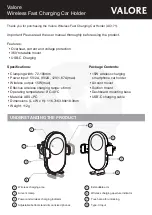
FLAMMABLE GAS SENSOR/TRANSMITTER
A T E X
M1
GROUP I & II
INTRINSICALLY
SAFE
5 INSTALLATION
continued
5.6 Hazardous Areas
Do not disassemble the sensor whilst in the hazardous area or use a sensor
that has a damaged housing in the hazardous area.
5.7 Evacuation
If a dangerous level of gas concentration is detected by the instrument, leave
the area immediately.
5.8 Operating Limits of Catalytic Combustion Sensors
Catalytic combustion gas sensors POSITIVELY detect the presence of flammable
gas. They rely upon the presence of oxygen in the atmosphere and should only
be used for gas concentration up to the Lower Explosive Limit (LEL).
After this point, the output becomes non linear and may erroneously indicate
that the gas concentration is below the LEL. they should not be used in oxygen
enriched or deficient atmospheres.
5.9 Discrimination
Catalytic combustion sensors can detect a wide range of flammable gases but
they cannot discriminate between individual gases. They will respond to most or
all of the flammable components present in the atmosphere without
distinguishing between them.
5.10 Contamination
The response of catalytic combustion gas sensors can be affected by air borne
contaminants which will reduce the sensitivity. Substances such as silicones,
tetraethyl lead, sulphur compounds and phosphate esters can cause permanent
degradation (poisoning). Halogenated carbons may also cause temporary inhibition.
5.11 Interference
If the atmosphere to be monitored contains a gas that dilutes or displaces the
air, this may reduce the response of catalytic sensors. Similarly, steam laden
atmospheres and condensation can reduce the sensitivity.
Air velocity may have a minor effect on the accuracy of the gas sensor.
9/28
INSTALLATION & OPERATING DATA
TT X
X 66 33 88 33
ISSUE S 01/15










































